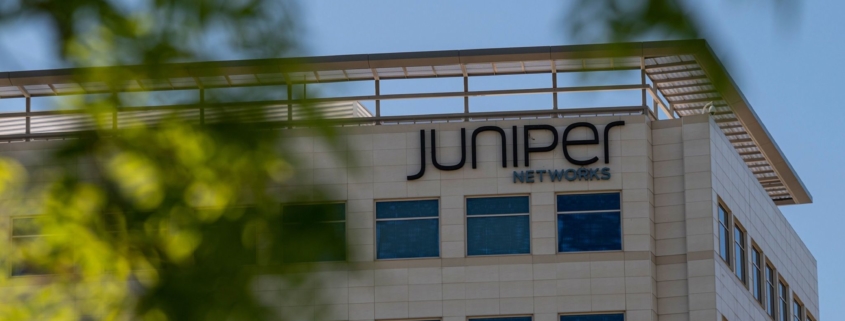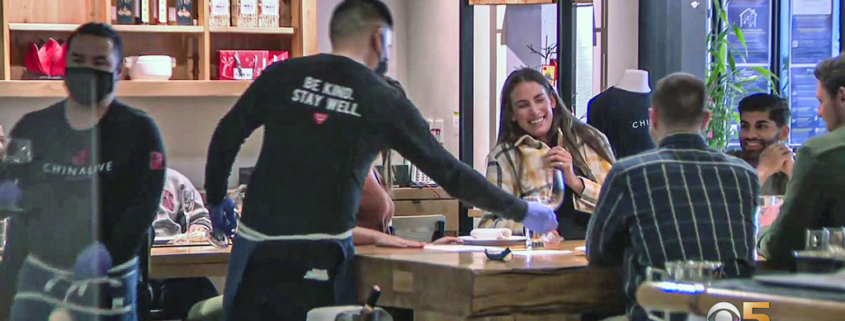Tag Archive for: Clear
Juniper breach mystery starts to clear with new details on hackers and US role
/in Computer Security
Days before Christmas in 2015, Juniper Networks Inc. alerted users that it had been breached. In a brief statement, the company said it had discovered “unauthorized code” in one of its network security products, allowing hackers to decipher encrypted communications and gain high-level access to customers’ computer systems.
Further details were scant, but Juniper made clear the implications were serious: It urged users to download a software update “with the highest priority.”
More than five years later, the breach of Juniper’s network remains an enduring mystery in computer security, an attack on America’s software supply chain that potentially exposed highly sensitive customers including telecommunications companies and U.S. military agencies to years of spying before the company issued a patch.
Those intruders haven’t yet been publicly identified, and if there were any victims other than Juniper, they haven’t surfaced to date. But one crucial detail about the incident has long been known — uncovered by independent researchers days after Juniper’s alert in 2015 — and continues to raise questions about the methods U.S. intelligence agencies use to monitor foreign adversaries.
The Juniper product that was targeted, a popular firewall device called NetScreen, included an algorithm written by the National Security Agency. Security researchers have suggested that the algorithm contained an intentional flaw — otherwise known as a backdoor — that American spies could have used to eavesdrop on the communications of Juniper’s overseas customers. NSA declined to address allegations about the algorithm.
Juniper’s breach remains important — and the subject of continued questions from Congress — because it highlights the perils of governments inserting backdoors in technology products.
“As government agencies and misguided politicians continue to push for backdoors into our personal devices, policymakers and the American people need a full understanding of how backdoors will be exploited by our adversaries,” Senator Ron Wyden, a Democrat from Oregon,…
OpenTable Joins With Secure ID Firm CLEAR To Streamline Vaccine Verification For Diners, Restaurants – CBS San Francisco
/in Mobile Security
SAN FRANCISCO (CBS SF) — As San Francisco and other major cities begin requiring proof of a COVID vaccination for indoor dining, online restaurant reservation provider OpenTable is partnering with secure identity firm CLEAR to help establishments check diners’ vaccine status.
San Francisco-based OpenTable said Wednesday that when diners use the app to make a reservation at a restaurant requiring vaccination, it will display a “CLEAR” banner on the reservation confirmation page linking to instructions on creating a digital vaccine card on the CLEAR app.
READ MORE: UPDATE: 12-Year-Old Killed, Woman Critically Hurt In Train Crash Involving Multiple Vehicles In Oakley
The CLEAR digital vaccine card will appear on the OpenTable app for easy proof of vaccination. The CLEAR vaccine card connects a person’s verified identity to their proof of vaccination from hundreds of vaccine providers across the country, including the state of California and national pharmacies.
“Our partnership with CLEAR furthers our commitment to help both restaurants and diners navigate dining out in the next chapter of the pandemic,” said OpenTable CEO Debby Soo in a press statement. “This collaboration aims to streamline restaurant entry, saving time for both restaurant staff and diners and lets everyone focus on the meal – not the logistics.”
The OpenTable/CLEAR integration is expected to launch in September on OpenTable’s iPhone and Android apps.
Last week, San Francisco began requiring businesses in high-contact indoor sectors such as bars, restaurants, indoor gyms and entertainment venues to obtain proof of vaccination from their patrons and employees, the first health order of its kind in the nation.
READ MORE: Labor, Community Leaders Urge ‘No’ Vote On Newsom Recall At Oakland Rally
The mandate follows a number of tough COVID-19 measures San Francisco imposed since the beginning of the pandemic. The city and its neighboring counties in the Bay Area were the first in the nation to order residents to stay at home in order to slow the spread of the coronavirus and was the first big city in the nation to require all city employees to be vaccinated, without the option of testing…
It’s Not Even Clear If Remdesivir Stops COVID-19, And Already We’re Debating How Much It Can Price Gouge
/in Internet SecurityYou may recall in the early days of the pandemic, that pharma giant Gilead Sciences — which has been accused of price gouging and (just last year!) charging exorbitant prices on drug breakthroughs developed with US taxpayer funds — was able to sneak through an orphan works designation for its drug remdesevir for COVID-19 treatment. As we pointed out, everything about this was insane, given that orphan works designations, which give extra monopoly rights to the holders (beyond patent exclusivity), are meant for diseases that don’t impact a large population. Gilead used a loophole: since the ceiling for infected people to qualify for orphan drug status is 200,000, Gilead got in its application bright and early, before there were 200,000 confirmed cases (we currently have over 1.3 million). After the story went, er… viral, Gilead agreed to drop the orphan status, realizing the bad publicity it was receiving.
After a brief dalliance with chloroquine, remdesivir has suddenly been back in demand as the new hotness of possible COVID-19 treatments. Still, a close reading of the research might give one pause. There have been multiple conflicting studies, and Gilead’s own messaging has been a mess.
On April 23, 2020, news of the study’s failure began to circulate. It seems that the World Health Organization (WHO) had posted a draft report about the trial on their clinical trials database, which indicated that the scientists terminated the study prematurely due to high levels of adverse side effects.
The WHO withdrew the report, and the researchers published their results in The Lancet on April 29, 2020.
The number of people who experienced adverse side effects was roughly similar between those receiving remdesivir and those receiving a placebo. In 18 participants, the researchers stopped the drug treatment due to adverse reactions.
But then…
However, also on April 29, 2020, the National Institute of Allergy and Infectious Diseases (NIAID) announced that their NIH trial showed that remdesivir treatment led to faster recovery in hospital patients with COVID-19, compared with placebo treatment.
“Preliminary results indicate that patients who received remdesivir had a 31% faster time to recovery than those who received placebo,” according to the press release. “Specifically, the median time to recovery was 11 days for patients treated with remdesivir compared with 15 days for those who received placebo.”
The mortality rate in the remdesivir treatment group was 8%, compared with 11.6% in the placebo group, indicating that the drug could improve a person’s chances of survival. These data were close to achieving statistical significance.
And then…
“In addition, there is another Chinese trial, also stopped because the numbers of new patients with COVID-19 had fallen in China so they were unable to recruit, which has not yet published its data,” Prof. Evans continues. “There are other trials where remdesivir is compared with non-remdesivir treatments currently [being] done and results from some of these should appear soon.”
Gilead also put out its own press release about another clinical trial, which seems more focused on determining the optimal length of remdesivir treatment. Suffice it to say, there’s still a lot of conflicting data and no clear information on whether or not remdesevir actually helps.
Still, that hasn’t stopped people from trying to figure out just how much Gilead will price gouge going forward:
The Institute for Clinical and Economic Review (ICER), which assesses effectiveness of drugs to determine appropriate prices, suggested a maximum price of $ 4,500 per 10-day treatment course based on the preliminary evidence of how much patients benefited in a clinical trial. Consumer advocacy group Public Citizen on Monday said remdesivir should be priced at $ 1 per day of treatment, since “that is more than the cost of manufacturing at scale with a reasonable profit to Gilead.”
Some Wall Street investors expect Gilead to come in at $ 4,000 per patient or higher to make a profit above remdesivir’s development cost, which Gilead estimates at about $ 1 billion.
So… we’ve got a range of $ 10 to $ 4,500 on a treatment that we don’t yet know works, and which may or may not save lives. But, given that we’re in the midst of a giant debate concerning things like “reopening the economy” — something that can really only be done if the public is not afraid of dying (or at least becoming deathly ill) — the value to the overall economy seems much greater than whatever amount Gilead wants to charge. It seems the right thing to do — again, if it’s shown that remdesevir actually helps — is to just hand over a bunch of money to Gilead, say “thank you very much” and get the drug distributed as widely as possible. Though, again, it should be noted that a decent chunk of the research around remdesevir was not done or paid for by Gilead, but (yet again) via public funds to public universities, which did the necessary research. The idea that it’s Gilead that should get to reap massive rewards for that seems sketchy at best. But the absolute worst outcome is one in which Gilead sticks to its standard operating procedure and prices the drug in a way that millions of Americans can’t afford it, and it leads to a prolonging/expanding of the pandemic.


